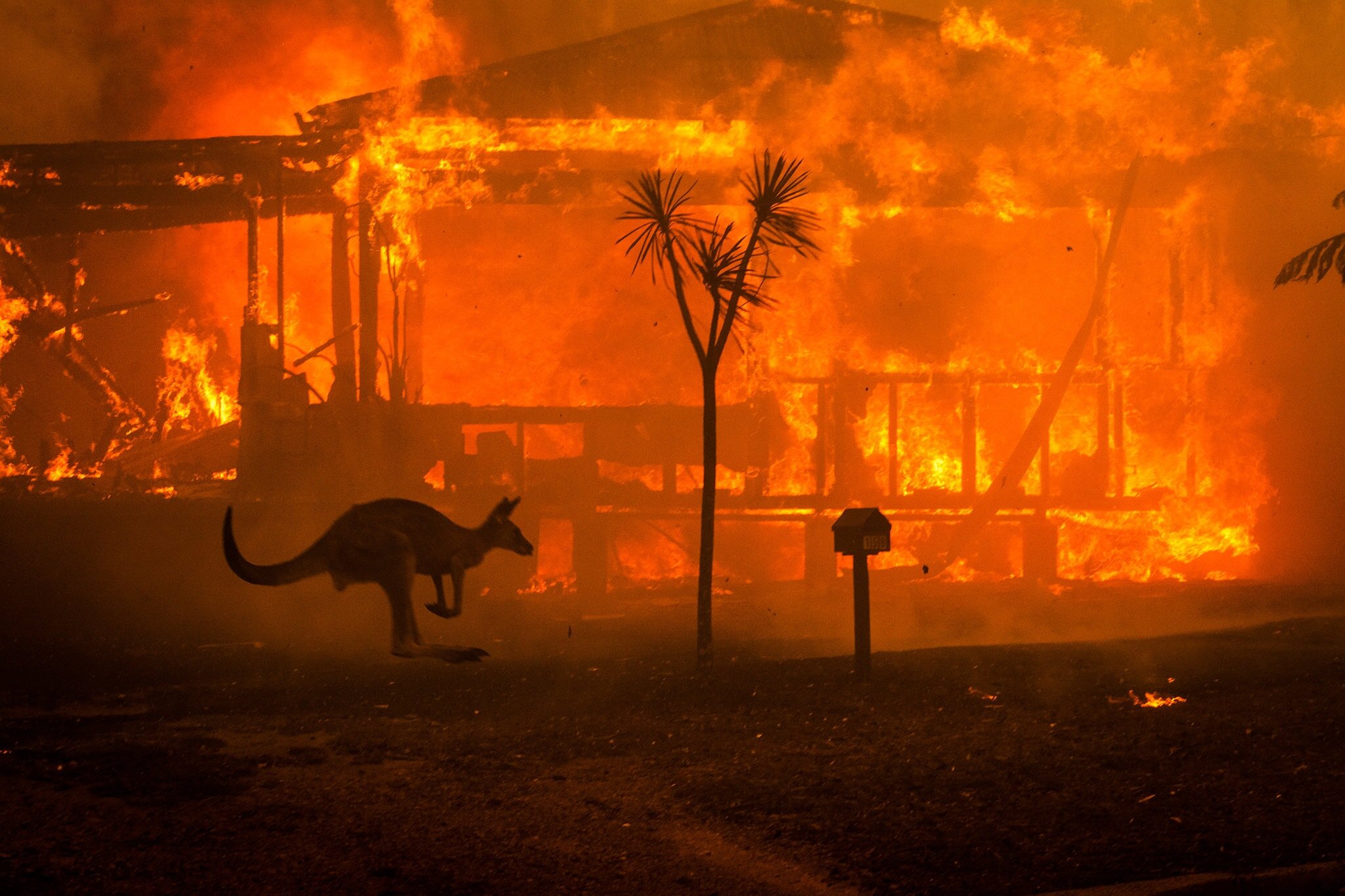Climate Emergency
A kangaroo rushes past a burning house in Lake Conjola, New South Wales, Australia. Matthew Abbott for The New York Times
“We’ve got fires that are still burning, transforming landscapes, wiping out wildlife - Australia’s not going to be the same after this. The consequences of this will be around for hundreds of years”


